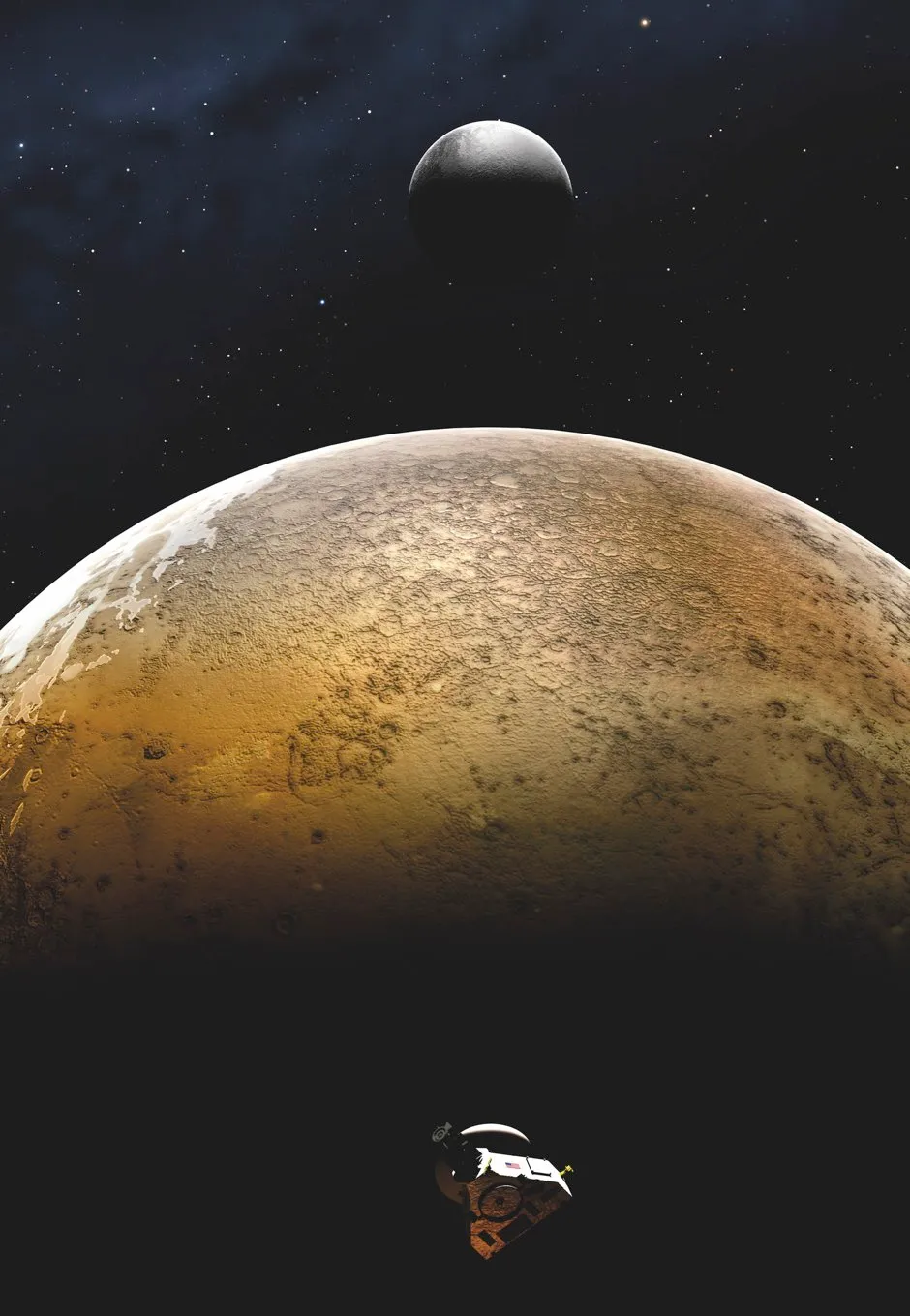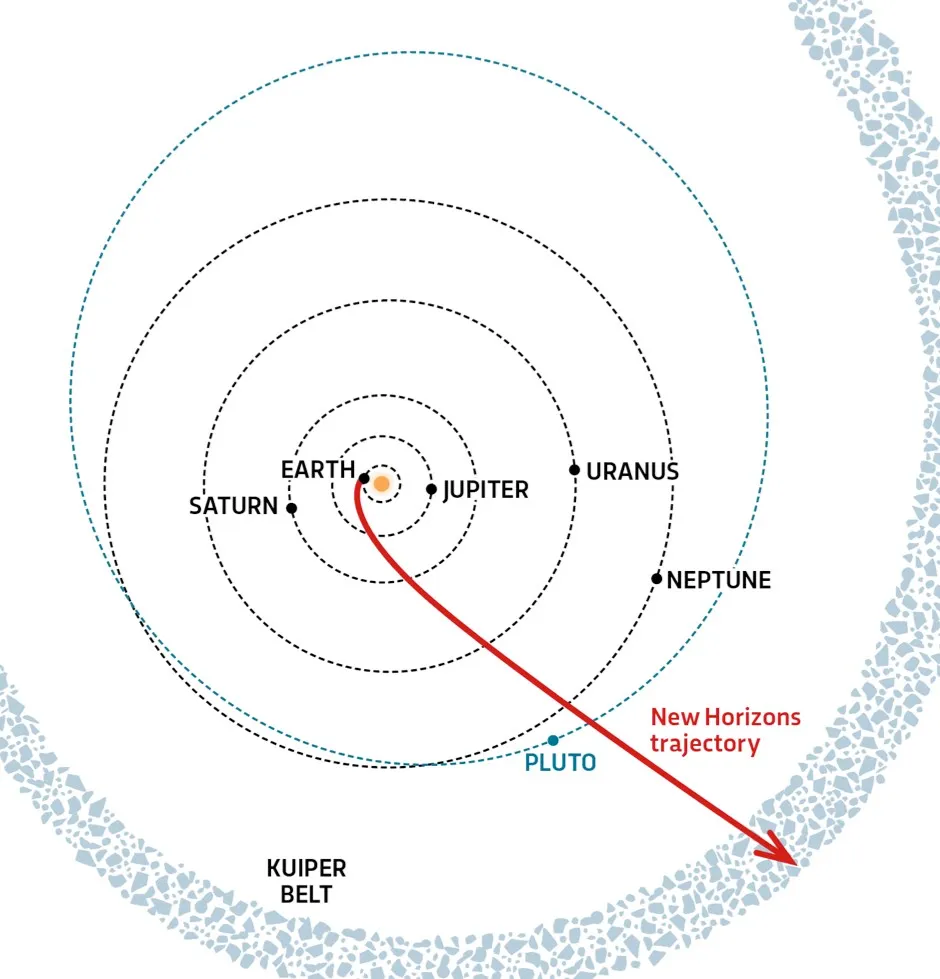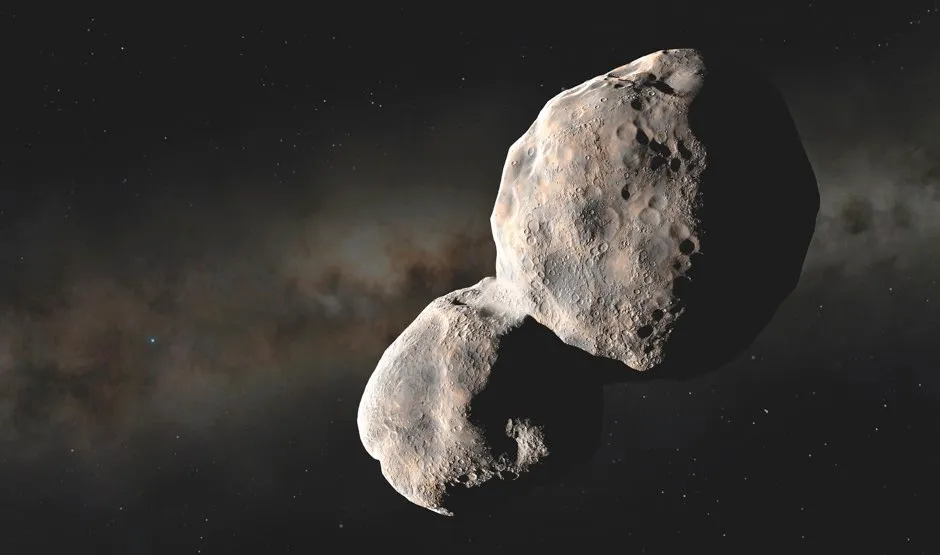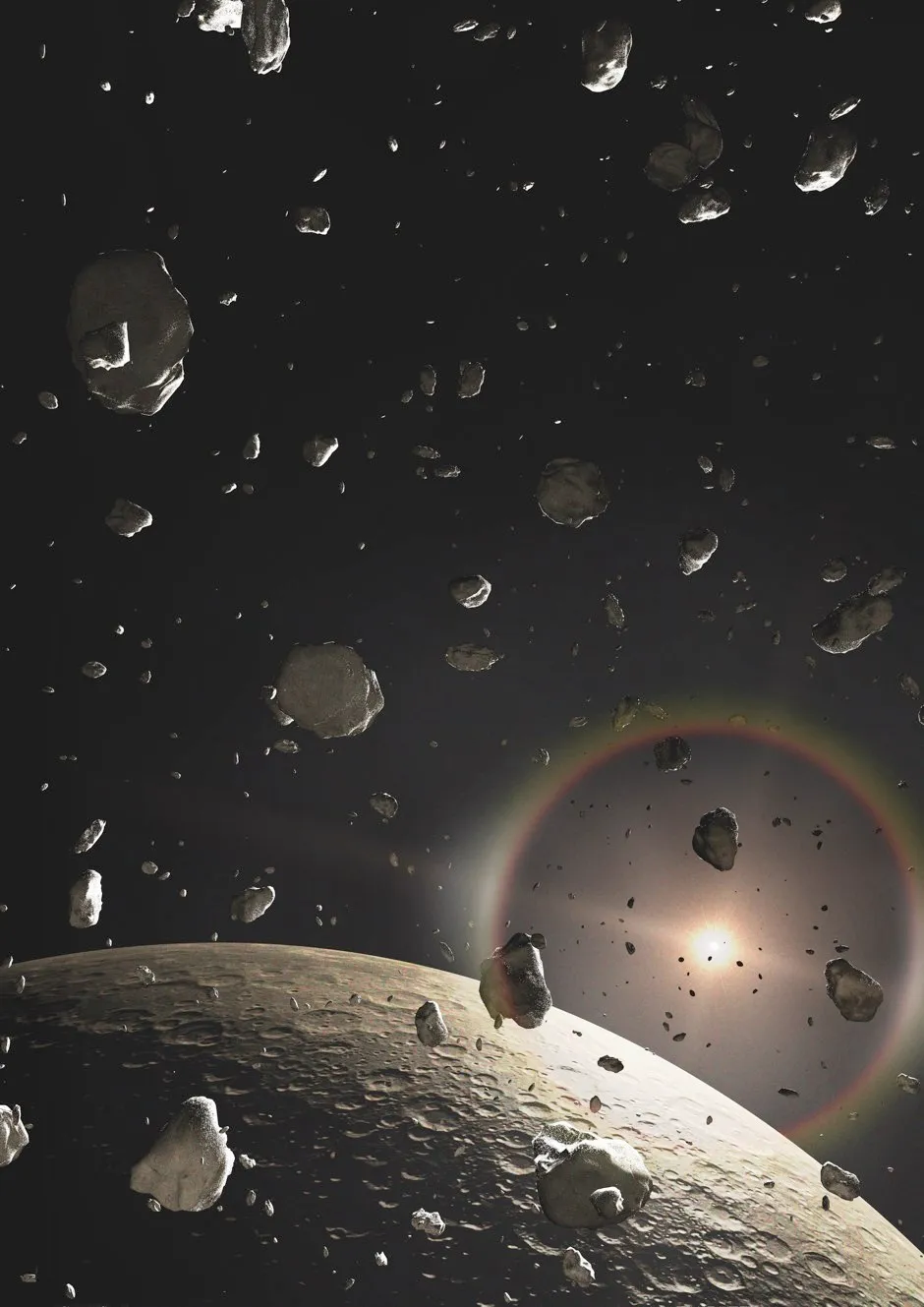On 19 January 2006, a spacecraft raced up through the blue skies over Cape Canaveral. By the time it reached space, it was travelling at 16km/s, faster than any launch up until then. The spacecraft was New Horizons. Its destination was Pluto.
It had taken decades for the $700m (£532m approx) mission to come together. It would be another nine years before it finally reached its target, during which time the International Astronomy Union had demoted the world from ‘planet’ to ‘dwarf planet’.
New Horizons eventually reached Pluto on 14 July 2015. The flyby lasted only a few hours, but in that time the spacecraft took 6.45GB of scientific readings of Pluto and its moons with its cameras, particle sniffers and dust detectors. While it only takes a few minutes to download a file that size to your home computer, transferring the data across the 4.8 billion kilometres between Pluto and Earth took a little longer – 16 months.
As the spacecraft was sending its trove of data, it continued racing outwards into the region of the Solar System that Pluto calls home – the Kuiper Belt, also known as the Kuiper-Edgeworth Belt.
“The Kuiper Belt is the third region of the Solar System as you move out,” says Dr Alan Stern, the principal investigator of New Horizons.
Read more about the outer Solar System:
- Planet Nine: How we’ll find the Solar System's missing planet
- Farout: "We discovered the most distant object ever observed in our Solar System"
The belt rings our Solar System between 20AU to 50AU (1AU is the distance between the Earth and Sun), and is filled with large icy bodies called Kuiper Belt Objects (KBOs).
At 1,188km across, Pluto is one of the largest KBOs, but there are an estimated 35,000 space rocks floating through the region. They are thought to be the leftovers from when the planets formed and represent the most pristine example of the primordial nebula from which our Solar System was born.
By studying these ice-rocks, planetary scientists hope to gain a better understanding of the conditions in whichthe planets grew.

Before the flyby of New Horizons, the only view we’d seen of these icy bodies were comets, many of which are thought to have originated in the Kuiper Belt before being knocked inwards. But while comets have been warmed and changed by the Sun, New Horizons offered the first chance to look at these worlds close-up in their natural habitat, and the researchers weren’t going to be happy with looking at just Pluto.
It would only take a little nudge to send New Horizons towards another target. But first, the team needed to find one. Fully surveying the New Horizons flight path for KBOs took several years, but in 2014 they found one – Arrokoth (previously nicknamed Ultima Thule).
Flybys in the Kuiper Belt
From what we know of the Kuiper Belt via long-range observations, Arrokoth is much more typical of other KBOs in terms of its size and colour than Pluto. A flyby would give a far more representative look at what a body in the Kuiper Belt looks like.
Despite the difficulties in aiming at a world just 36km long and over 6.6 billion kilometres away, New Horizons successfully sped past on New Year’s Day 2019. The data download from Arrokoth will take until 2021, but it’s already yielding momentous results.
Read more about Arrokoth:
- Arrokoth: Minor planet known as Ultima Thule given official name
- New Horizons returns sharp image of Ultima Thule
Arrokoth is what’s known as a ‘contact binary’, meaning it’s formed from two separate bodies that have stuck together. It is thought that the planets in the Solar System grew from small space rocks that clumped together to ever increasing sizes, so Arrokoth is the perfect place to test theories about how this process worked.
“There are two basic theories of how small bodies formed in the Solar System,” says Stern. “One says they formed from the collision of bodies from distant regions of the Solar System. The other theory says they form from objects only made locally around themselves in what’s called the ‘cloud collapse model’.

"We can determine that the local cloud collapse model fits with the geology of Arrokoth, deciding a long-standing scientific controversy between the two theories of how the planets form.”
There is still much for New Horizons to do beyond simply sending its data, however. There’s a chance for another flyby and Stern’s team are preparing a hunt for more potential targets. Once again, the search will take several years – until at least 2022 – but this time, the flight team are working against the clock.
Read more about New Horizons:
“The Kuiper Belt only runs out a finite distance,” says Stern. “By 2027 or 2028 we will exit the Kuiper Belt. We must find and intercept an object by that date or we will be past the Kuiper Belt and the possibility of a flyby will end.”
If these searches do come up empty, the mission is still far from over. It is the first spacecraft to pass through these outer regions of our Solar System since the Voyager probes. Updated with 30 years’ worth of technological advancements, New Horizons can look for things that the Voyagers could not.

“We’ve already seen evidence of a vast structure of hydrogen gas in the outer Solar System,” says Stern. It was predicted decades ago but was never observed until New Horizons. “We also observed pick-up ions. These are atoms from interstellar space that have become part of the heliosphere – the environment of the Solar System. Again, they have been predicted for many years, but Voyager didn’t have the right spectral range to discover them.”
The spacecraft is also carrying the first ever dust detector to travel beyond the orbit of Uranus, allowing the New Horizons team to map the distribution of dust in the Kuiper Belt. The researchers are watching to see if particles smoothly tail off towards the edge of the disc, or if they suddenly drop off.
There are plenty of scientific communities clamouring to use the spacecraft to observe this seldom visited region. For the time being this research is limited, as Stern wants to preserve the fuel in case another flyby presents itself.
“I often call myself ‘fuel hoarder in chief’,” says Stern. “There’s only so much fuel in the tank. If we discover a flyby but can’t reach it because we used part of the fuel for other purposes, that would be scientifically tragic.”
If there is no third Kuiper Belt flyby, or there’s still fuel left after it, then the spacecraft’s cameras could be pointed back at the inner Solar System to give a unique view of the planets, comets and asteroids from the outside. New Horizons is also outside of the dusty environment of the inner Solar System, and so its instruments could be pointed towards the wider Universe to take advantage of the clear view of distant objects across the void of space.
Time is running out
But no one lives forever, and neither does a spacecraft. The nuclear power source on New Horizons is only expected to last another 20 years. Travelling at around 500 million kilometres per year (about the distance from Earth to Jupiter), it should be out at around 100AU by this point, meaning the team will aim to investigate one final region before the spacecraft dies – the outskirts of the heliosphere.
New Horizons is unlikely to reach the very edge, as the Voyager probes found it is located around 120AU out, but there is a chance the spacecraft could make it.

“The boundary between the heliosphere and interstellar space breathes in and out because of the Sun’s 11-year cycle of activity,” says Stern. “We know where New Horizons will be very accurately but we don’t know where the boundary is. If it’s closer, we’ll cross it. If it’s further out, we’ll run out of power.”
What exactly New Horizons will do with the rest of its time is uncertain, but it is clear that with fuel left in the tank and 20 years on the battery, its mission is far from over.
New Horizons' top discoveries
The New Horizons mission has revolutionised our understanding of the icy bodies in the outer Solar System.
1
Lightning on Jupiter
New Horizons stopped by Jupiter on its way to Pluto, spotting lightning in the clouds over the poles.
2
Kuiper Belt Objects form locally
Studying Arrokoth helped scientists determine the planets formed out of nearby material.
3
Walnut and pancake
Arrokoth has a weird shape. One lobe is wide and flat,like a pancake, while the other is rounder.
4
Pluto is active
Geologists were expecting to find Pluto a geologically dead world, but in reality it’s highly active. This activity is filling in Pluto’s meteor craters, giving the dwarf planet’s surface a youthful smoothness.
5
Pluto’s heart
Pluto’s heart-shaped nitrogen glacier, Sputnik Planum, is1,000km wide, making it thelargest known glacier in theSolar System.
6
Skies of blue
Pluto is surrounded by a bluehaze, most likely caused by methane in the atmosphere.
7
Red moon
Pluto’s largest moon, Charon,is covered in a red material, formed from gases whichescaped Pluto’s atmosphere.
8
Spinning satellites
Pluto’s four other moons (Hydra, Nix, Kerberos and Styx) spin faster than any other known satellite in the Solar System.
9
Picked-up ions
New Horizons observed the solar wind slowing down as it mixed with atoms from interstellar space.
